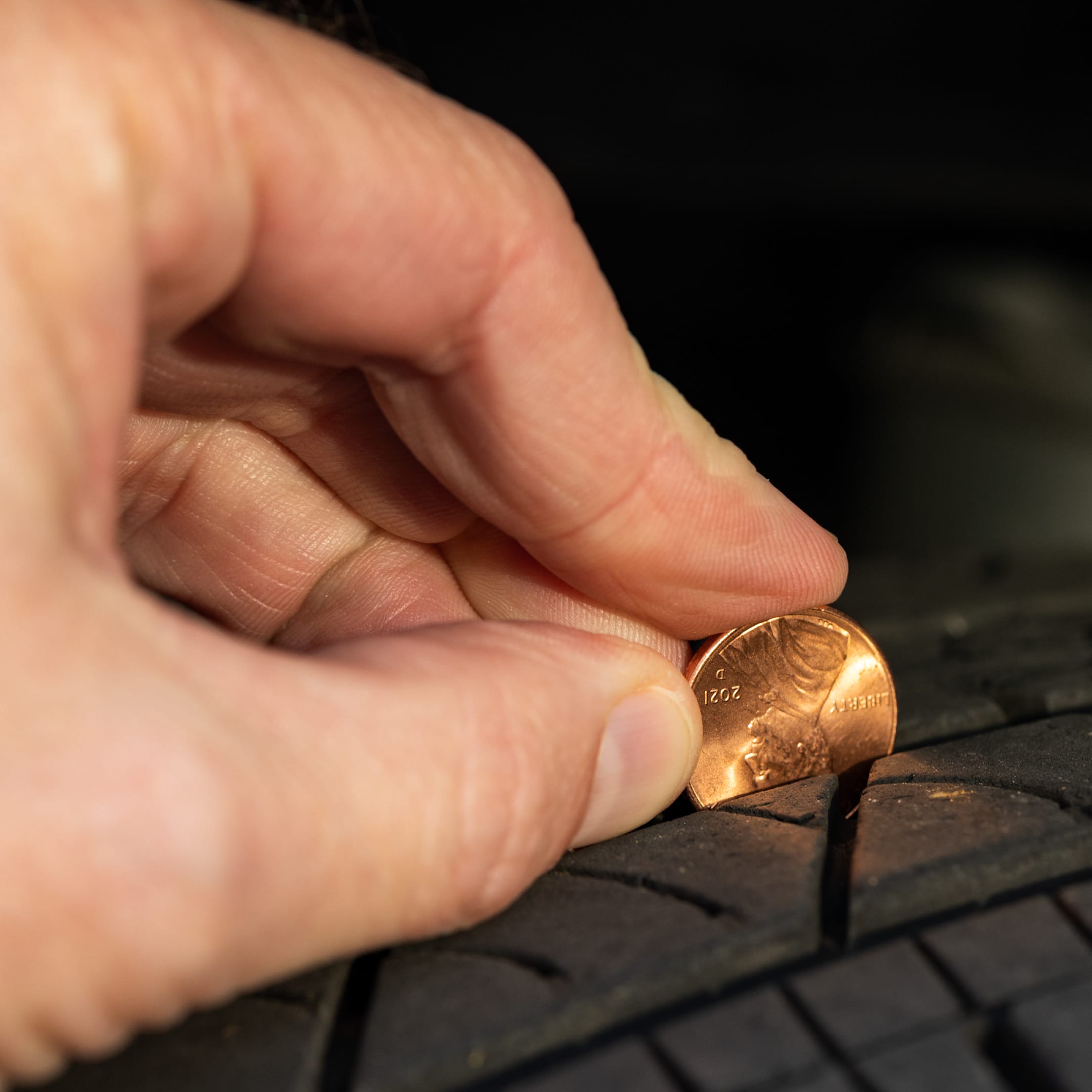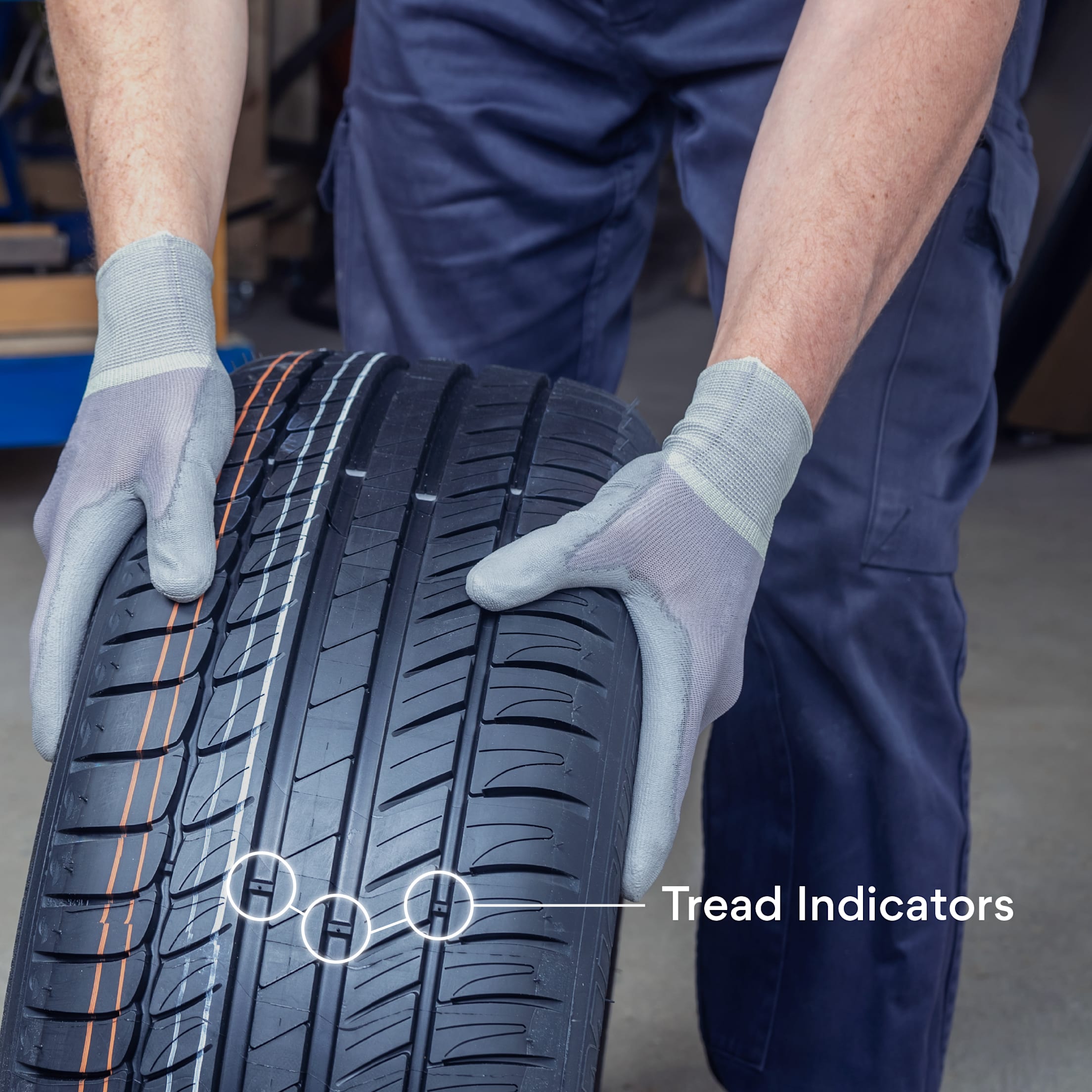When Should You Replace Your Tires for Winter?
Wondering if your tires are safe for winter driving? Learn how to assess the tread.

When driving on icy or snow-covered roads, your vehicle needs tires that can grip the road, so you don’t swerve out of control. When temperatures drop to freezing, the treads on summer tires and all-season tires firm up, making it difficult to get traction. But winter tires are made of a special rubber compound that stays pliable, and their treads have specially designed grooves that further help grab the road surface in winter conditions. Read on to learn about when you should replace your tires for winter.
What are winter tires?
Winter tires, which pass specific traction standards for snow, offer better traction, braking, and cornering performance than summer tires or all-season tires. They drive more easily on snow and ice, as well as wet and dry roads in cold weather.
Some winter tires have metal, ceramic, or hard rubber studs embedded in their tread that grip hard-packed snow and ice-covered roads. Studded tires might be a good option for drivers who live in a remote area with severe winters, but there are some drawbacks. On paved roads, the studs can actually reduce grip and tear up the street. Many states don’t always allow studded tires during cold or warm weather, so check your local laws.
How to Check If You Need to Replace Your Winter Tires
Like everything else, winter tires wear down over time. And as tire treads wear down, they lose their ability to grip the road. If you’re wondering whether it’s time to change your winter tires, you’ve come to the right place.
There are three ways to check a tire’s tread depth: the penny test, built-in tread wear indicators, or a tread depth gauge.
Keep in mind that all four tires don’t have the same tread-depth requirements. If your front winter tires have reached less than 4/32 inch of tread depth or your back tires are at 2/32 inch, replace them immediately. Bald tires are not safe and have been known to cause hydroplaning, blowouts, understeering, and lack of control.
Method 1: Try the Penny Test

To conduct the penny test, insert a penny into the tread ribs (the raised portion of the tread) with Abraham Lincoln’s head pointing down. If Lincoln’s forehead disappears, your tread is more than 2/32 inch. If you can see part or all of Lincoln’s forehead, it’s probably time to replace the tire. Tires can wear unevenly, so check at least three different grooves on each tire tread.
Uneven tread wear can indicate an underlying problem like wheel misalignment or suspension trouble. If you notice signs of uneven treads, reach out to an auto repair shop near you and have a mechanic check your car for issues.
Method 2: Check the Tread Wear Indicator Bars

Another way to see if it’s time to get a new tire is by looking at the tread wear indicator bars. You’ll find these rubber bars at the bottom of the tread grooves. (There are several scattered around your tire.) When the tread has worn down enough that the tread bar is flush with the tread ribs, it’s time to replace the tire.
Method 3: Use a Tread-Depth Gauge

A more precise way to check tread depth is to use a device called a tread-depth gauge, which comes in manual and digital options. Most manual tread-depth gauges look like a syringe with a measuring pin or “driver” instead of a needle.

To use a manual one:
- Place the gauge against the tire tread with the pin centered directly over a groove, making sure the gauge’s shoulders are resting on the adjacent raised tread blocks.
- Press down on the gauge to insert the measuring pin into the tread groove and take your reading.
Digital tread-depth gauges can typically measure to the decimal inch or millimeter, presenting the tire’s tread depth on a screen. Follow the manufacturer’s directions for the most accurate reading.
When to Replace Your Summer or All-Season Tires for Winter Tires
Summer and all-season tires tend to become less effective in lower temperatures—even if there isn’t snow and ice on the roads. So as a general rule, it’s a good idea replace them with winter tires when your local climate consistently drops below 45 degrees Fahrenheit. Pro tip: Note the temperatures in the early mornings, when cold temperatures are most common.
Do I need winter tires if I have all-wheel drive?
If you have an all-wheel-drive vehicle, you might be tempted to forego winter tires. But road testing by Consumer Reports found that in some situations, winter tires are a better option than relying solely on all-wheel drive.
Did you know that AAA has Auto Repair Centers? AAA provides quality auto repair and legendary service to both Members and non-Members.